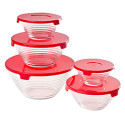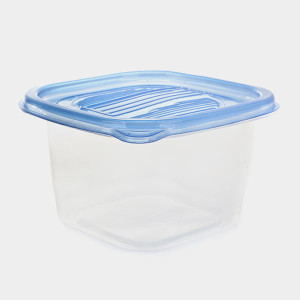Can It Be Recycled? Depends on the Number
Tupperware, Glad or other brand plastic food storage containers are made from different types of plastics and have different handling instructions. Look to see which number (from 1 to 7) the container has, and then recycle according to that number. Learn more about plastics #1, #2, #3, #4, #5, #6 and #7.
Don’t Reheat Food in Plastic
All plastics contain harmful chemicals that can leach into your food when they’re heated. Before reheating food in a microwave, transfer it from a plastic container to a plate or glass dish. Don’t put plastics in the dishwasher, which uses hot water and steam, wash them by hand with lukewarm water instead.
Ways to Reduce

Glass and Ceramic Are the Best Options
Cut down on your plastic food storage containers by purchasing glass or ceramic food containers, which last longer than the plastic ones. Furthermore, glass and ceramic containers can be microwaved more safely than plastic containers, and you can put them in your dishwasher.
Buy Durable Plastic Containers
Buy plastic food containers that are durable instead of flimsy ones that will need to be thrown out soon after you buy them. Tupperware offers a lifetime guarantee and will replace broken or damaged items for free, and there’s also Sistema, which makes durable, BPA-free plastic food storage containers.

